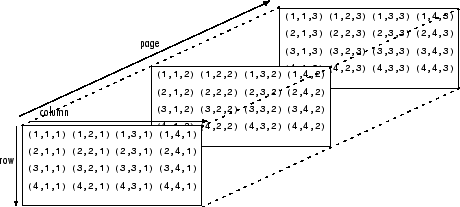pagenorm
Description
N = pagenorm(X,p)X, where
p is 1, 2, or
Inf.
If
p = 1, thenNcontains the maximum absolute column sum of each page ofX.If
p = 2, thenNcontains the maximum singular value of each page ofX.If
p = Inf, thenNcontains the maximum absolute row sum of each page ofX.
Examples
Input Arguments
Output Arguments
More About
Tips
The
squeezefunction is useful to reshape results frompagenormas a column vector.Results obtained using
pagenormare numerically equivalent to computing the norm of each of the same matrices in afor-loop. However, the two results might differ slightly due to floating-point round-off error.
Extended Capabilities
Version History
Introduced in R2022b
